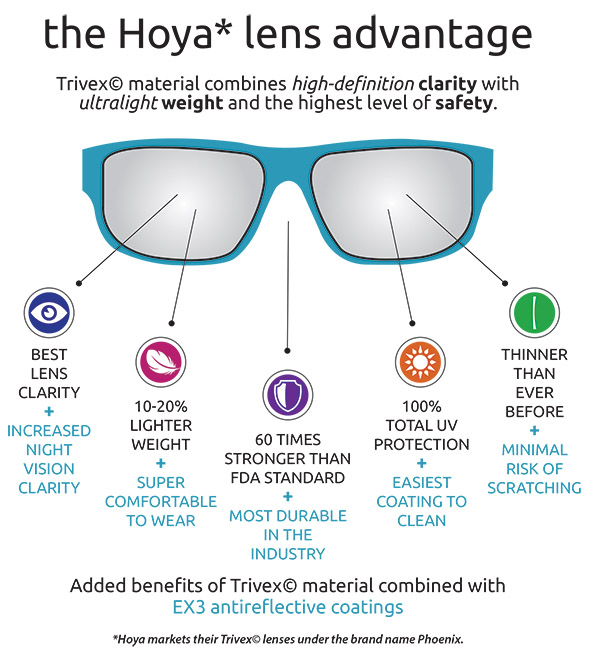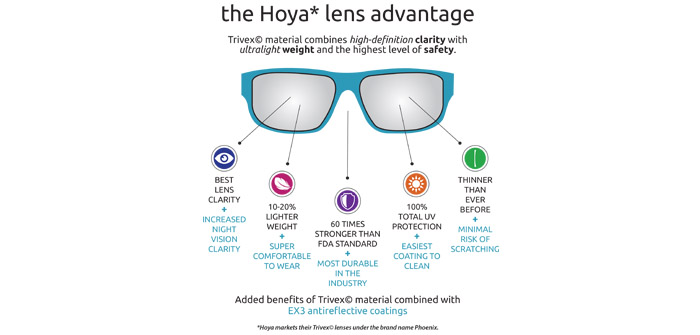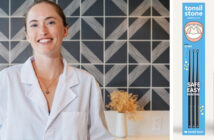(Graphic | by Thistlefish Design)
When it comes time for new glasses the solution seems simple — find the best price, and “maybe this time we’ll even consider the online optical retailer with those cute frames” since, as we are repeatedly told in the popular press, “all lenses are all the same.”
Getting the biggest bang for our buck is important to all of us — whether we own a tech company in Central Oregon, we are employed working on computers throughout the day or are a parent with active kids in sports. When we are looking for glasses we need to consider that each of us has different visual demands.
The tech company owner wants a good wellness program for their workforce, and a reasonable Return On Investment (ROI). ROI for employee glasses? What if, with the proper high-quality lens coating, our owner could increase productivity by five to ten percent? No different than professional photographers who demand special coating for their camera lenses to obtain the clearest images.
The computer worker wants to reduce computer eye fatigue plus needs long-term protection, so they should demand a lens that protects the eyes from screen issues (blue light and glare). And we should also consider free-time activities; let’s say they bow-hunt each fall and need the clearest possible sight both straight ahead and in their peripheral vision.
The parent wants the strongest impact-resistant lens for their student-athlete including full UV sun protection. In addition, most students are on the iPad/tablet/phone device during and after the school day, so blue light protection is an important consideration too.
The solution? Find a trusted professional optical staff at a local eye care office who can spend the time and has the professional training and knowledge necessary to identify and meet your unique visual needs, and then be available to provide you with the critical ongoing after-sale service for your glasses.

Briefly, let’s consider the options of today’s enhanced ophthalmic lenses:
- Material: Surprisingly, most glasses today are not made of glass at all but are made of either plastic, polycarbonate or Trivex. Plastic lenses — or CR-39 —
is a 1970’s technology, whereas polycarbonate is the 1980’s technology. Trivex lenses are the most advanced optical lenses today, and were developed in the early 2000s. Trivex offers the clearest sight across the entire lens. These lenses are 60 times stronger than FDA standards and are the lightest weight. - Coatings can enhance clarity and performance, but most of us have never considered the coating on a pair of glasses. Of course, the professional photographer always demands the best optical coatings on their camera lenses. Quality coatings allow seven percent better night vision plus can provide blue-blocking protection, reduce eyestrain and can protect against smudges and scratches on the lenses.
- Design is a critical feature of the performance of any lens but often overlooked when pundits are repeating that “all lenses are the same”. Terms like “Abbie value,” “Binocular Harmonization” and “Integrated Double Surface (iDs) Technology” are critical differentiation terms to optical engineers. Two pairs of glasses can have exactly the same prescription and “look-alike” but be markedly different when it comes to clarity, reducing eye strain and heightened optical performance throughout the day.
So how do we, as eyecare professionals, select a lens company to ensure that our patients always see their best? Our solution is to partner with a lens manufacturer that continues to invest in innovative optical technologies to continue to make lenses optically better. That company for us is Hoya, a name recognized and synonymous with optical quality worldwide.
When we are asked, “can’t I get these same lenses cheaper?” No, not the same lens — if you are looking for clarity, comfort, durability and ongoing professional service, those “same” glasses aren’t the same at all.
Putting this all together means, “The better you see, the better you’ll perform.”
Professional photographer Ric Ergenbright says, “Throughout my professional career I’ve demanded that my camera lenses be the best to capture the sharpest images possible… and, having been blessed with extraordinary vision, I’ve never needed glasses to clearly see the world around me. Yet, even though I could easily read the 20/15 line at my recent exam at Integrated Eye Care, some minor astigmatism was revealed that made my vision less than perfect. And, as a photographer, I need perfect! So glasses were ordered, and the TACK SHARP clarity they provide is truly like seeing the world anew … and it was already unfathomably beautiful. Today’s optics, whether in eyeglasses or photographic lenses, making it a great time to see it!”





